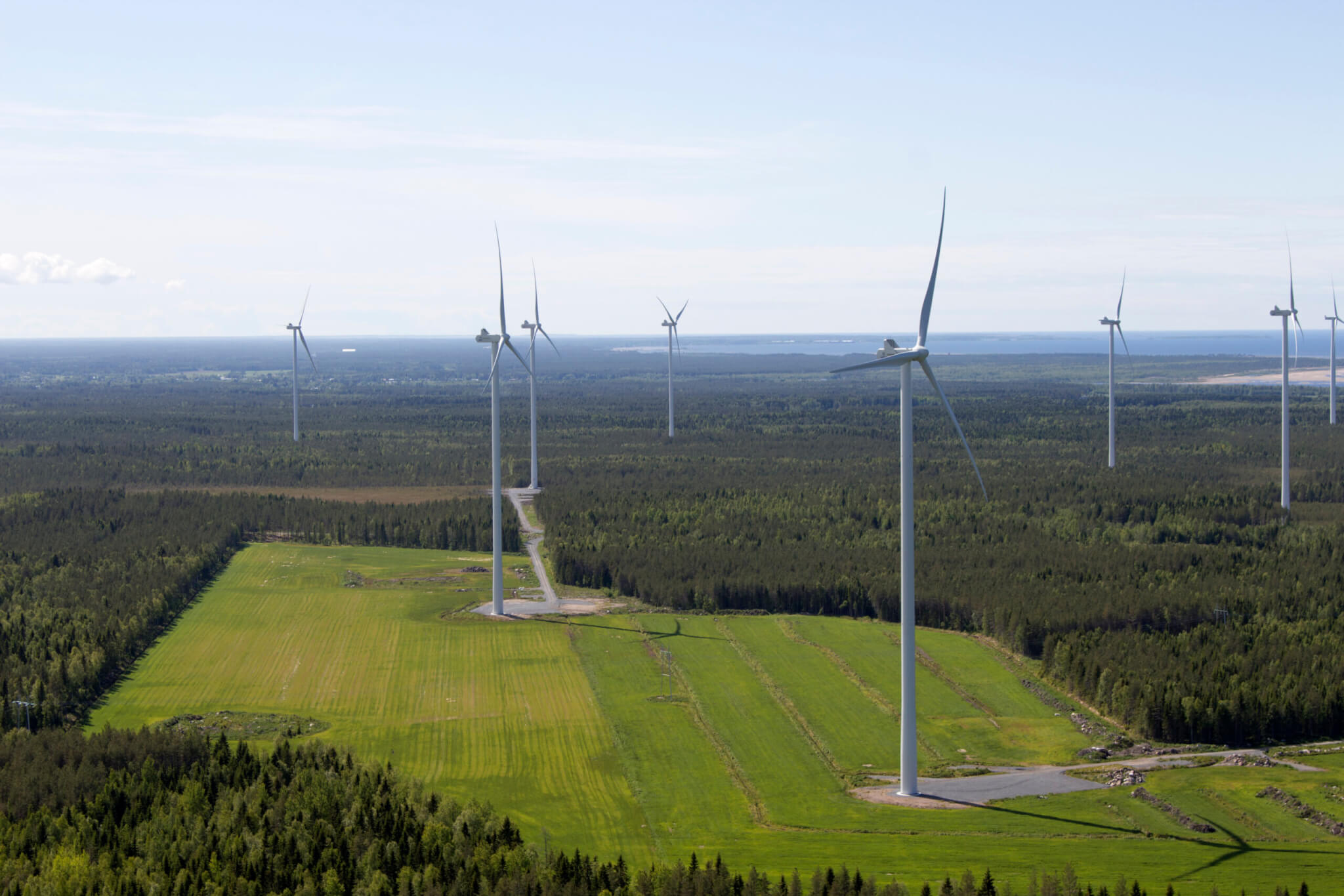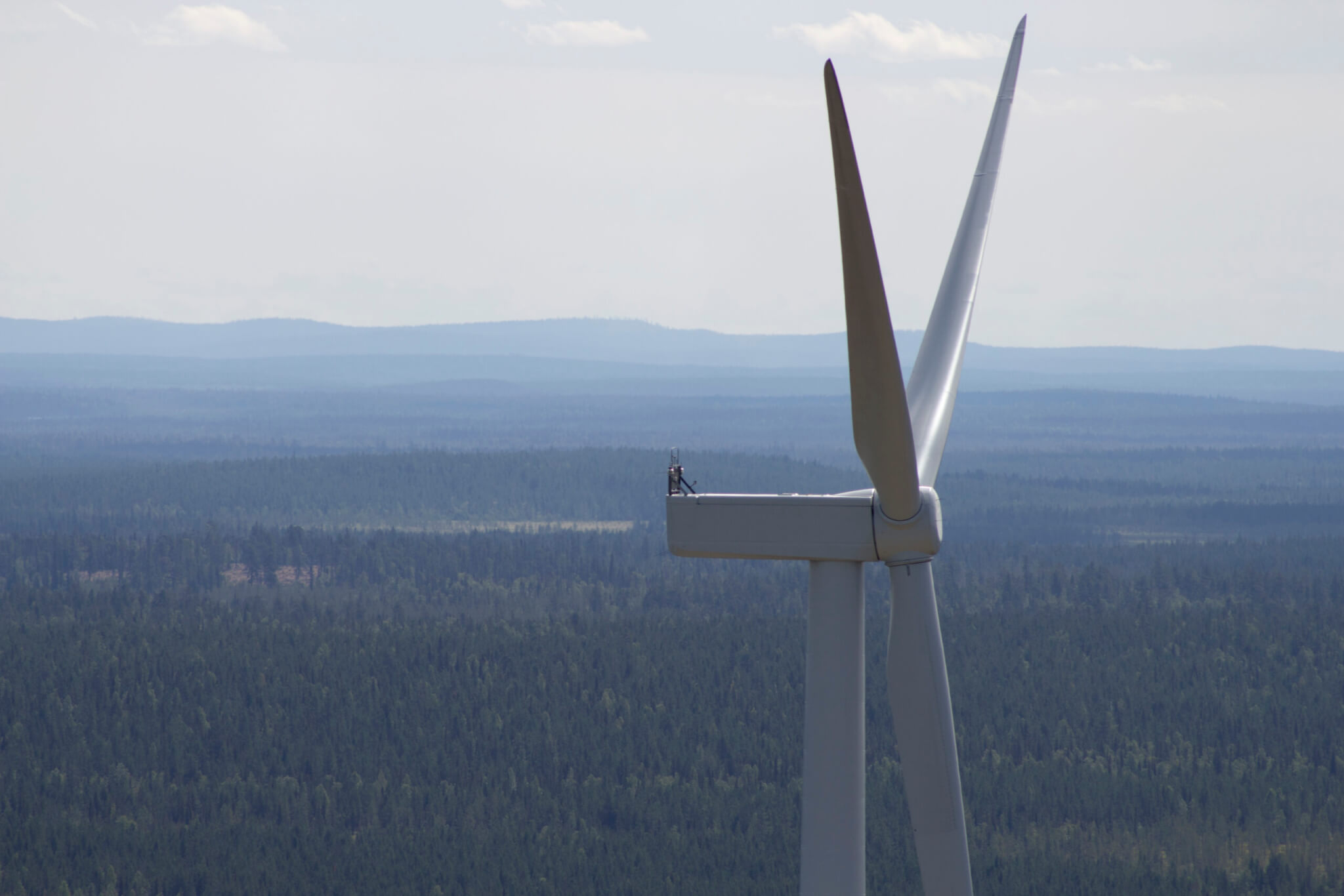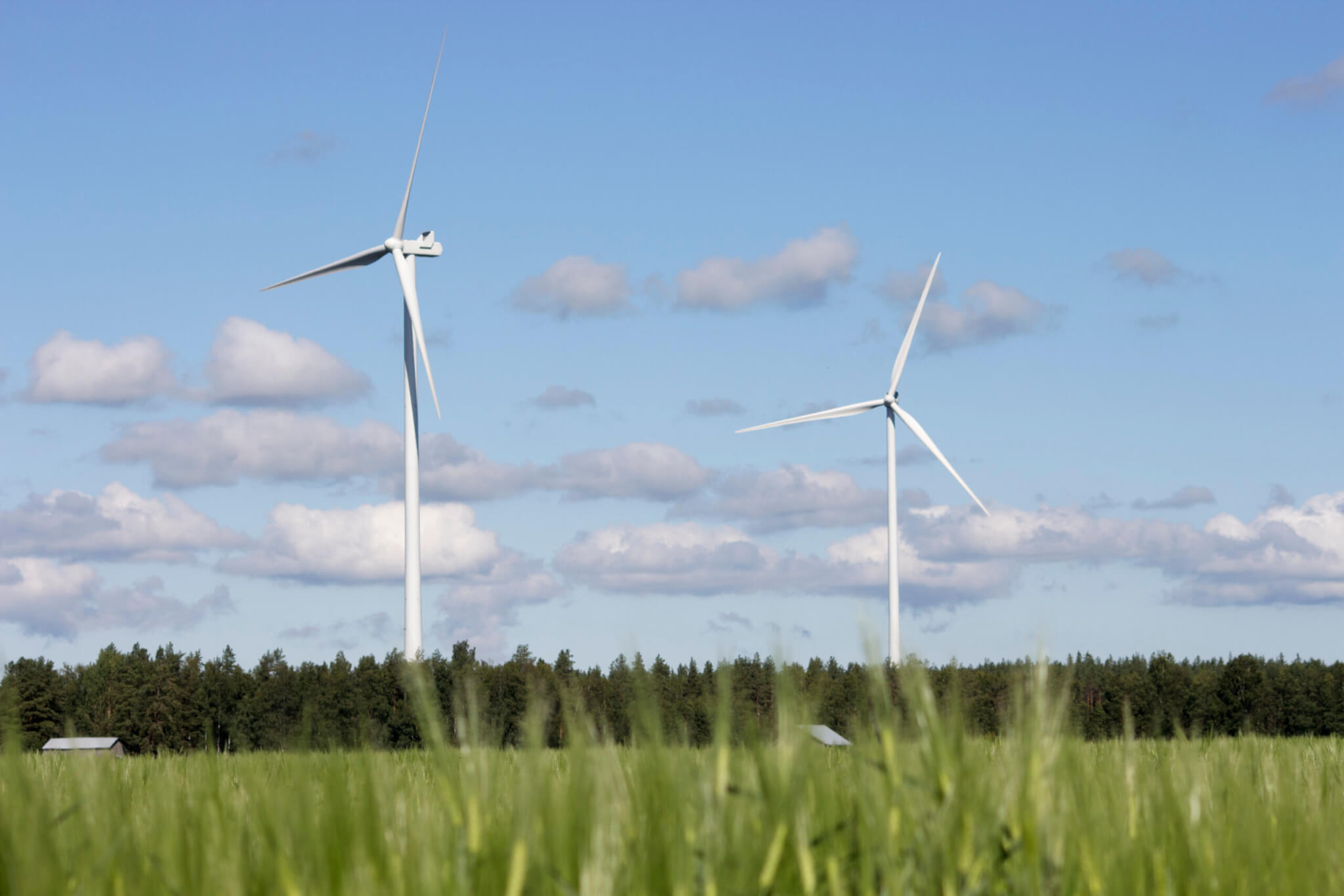Effects to the economy
Wind power projects not only contribute to the fight against climate change, but also have significant social effects. These effects can be examined from the point of view of, for example, employment, municipal finances and real estate values.
Here you can read more about:

Property tax on wind turbines
Property tax is paid for each wind turbine yearly and it’s paid for the municipality, where turbines are located. Especially in smaller municipalities, the property taxes paid by wind power play a significant role in the municipality’s economy.
Property tax rate for wind turbines can be maximum of 3,1 %, when the power of the wind farm is more than 10 megawatt-amperes (MVA). The tax is calculated on the bases of the investment costs of the foundation, tower, and nacelle, excluding the costs of the machinery and the blades. Therefore, typically about 30 % of the WTG investment costs are basis for the property tax. If the capacity of the power plant is less than 10 MVA, the property tax for the power plant is determined according to the general property tax rate of the municipality.
Mainly power plant property tax rate is used
The value of the property is deducted annually with the age discount percentage. Currently, the age discount for a wind turbine is 2,5 %. The taxable value decreases by this amount per year until it reaches the minimum taxable value of 40 %. The lifetime of a modern turbine is today more than 30 years, so the newest turbines will reach the minimum property tax rate during their lifetime. Depending on the power plant, the minimum taxable value will be reached in year 24 or 25, after which the onshore wind turbine will pay property tax of around 15 000 euros to 18 000 euros per year, depending on its investment cost.
The total amount of property tax paid by one onshore wind turbine located in wind farm is more than 400 000 euros during the 30 years of operation if the municipality has adopted the highest possible property tax rate for a power plant. If the wind turbine is not located in a wind farm, it is subject to property tax at the general municipal property tax rate as long as the capacity of the singe turbine is less than 10 MVA. For a single 3 MW onshore wind turbine not located in a wind farm, the property tax in the first year ranges from 6 000 euros to 11 500 euros. A single onshore wind turbine will generate property tax revenues of around 130 000 euros for the municipality over its lifetime.

Determination of wind farm property tax
The taxable property in a wind turbine consists of the foundation, the tower, and the outer shell of the nacelle (Supreme Administrative Court of Finland 11.11.2004 volume 2887). Property tax is calculated based on the investment cost of these three parts. Machinery and equipment are not a part of the property and do not affect the amount of the property tax.
The owner of a wind farm typically provides the Finnish Tax Administration a breakdown of the costs of the taxable wind turbine parts. The costs vary depending on the time of construction and the type of wind turbine, but in this example, it is assumed that the cost of the wind turbine and its foundation are about one million euros per megawatt. About 30% of this investment cost is subject to property taxation (i.e. foundation, tower, and outer shell of the nacelle).
If the investment cost of an onshore wind turbine is EUR 3.6 million for the entire turbine, EUR 3.6 million x 0.3 = EUR 1.08 million of this turbine is taxable. According to the Government Decree (Decree 1036/2018 of the Ministry of Finance), the taxable value of the real estate in the first year is 75% of the investment value, i.e. in this example EUR 1.08 million x 0.75% = EUR 810,000.
The municipality may determine its own property tax rate
The municipality may determine its own property tax rate. According to the legislation the municipality may define a general property tax rate, a power plant tax rate, a tax rate for summer cottages etc. A wind turbine is taxed either according to the general tax rate or according to the power plant property tax rate depending on the municipality and the capacity of the wind farm.
The average general property tax in Finland was 1.06 % in 2018. The maximum power plant property tax rate that the municipality may use is 3.1%. If the power plant property tax rate has not been determined, the power plants will be taxed according to the general property tax rate.
The wind turbine’s property tax is also determined by the general property tax rate if the capacity of the wind farm is less than 10 megavolt amperes (MVA). If the capacity of the wind farm is 10 MVA or more, the property tax is determined according to the power plant property tax rate.
A 4-megawatt (MW) wind turbine may have, for example, a 4.8 MVA generator. So, for example, if a small wind farm had one or two such wind turbines, they would be taxed according to the general property tax. If there were three or more turbines, they would be taxed by the power plant property tax rate.
The property tax value of a wind turbine decreases by 2.5% annually. The taxable value of the example wind turbine mentioned before was EUR 810,000 in the first year, and in the second year it would be EUR 810,000 – EUR 810,000 x 2.5% = EUR 789,750. There is also a General Construction Cost Index that affects the value of the property. As the index varies every year, it is not taken into account in this example.
In this example the property tax of a wind turbine located in a wind farm in a municipality that has set the power plant property tax rate at 3.1% would be.
in the first year € 810,000 * 3.1% = € 25,110
and in the second year € 789,750 * 3.1% = € 24,482
The property tax revenue is multiplied by the number of wind turbines, i.e. the property tax collected from the wind farm of 10 wind turbines in the first year would be € 25,110 * 10 = € 251,100.
In real life, during the past few years the property tax of the wind farms in Finland has varied between € 20,000 and € 35,000 on the first operating year.

Community tax
Entities pay income tax on the difference between their taxable income and their deductible expenses, calculated on the profit at a rate of 20 %. In addition to corporations, cooperatives and, under certain conditions, business enterprises, public bodies, associations, institutions, foundations, and housing cooperatives are also subject to corporation tax.
The distribution of depreciation has a strong influence on how much corporation tax is due in any given year. Due to the high investment cost of wind farms, depreciation is significant during the first years of operation. As a result of depreciation, the amount of corporation tax accruing from a wind farm is relatively small during the first years of operation.
Determination of community tax
The municipal share of community tax for the tax year is determined based on the data from the two most recently completed taxations. If an entity is established in only one municipality, the entity’s tax is added to the calculation of this municipality. Conversely, if the entity has an establishment in more than one municipality, the entity’s tax is added to the calculation of those municipalities in proportion to the number of employees in each municipality in which the entity has an establishment.
However, the taxes of entities belonging to a corporation are added together and added to the tax calculation of the municipalities concerned in proportion to the number of employees per municipality of the establishments of the entities belonging to that corporation. In these cases, therefore, the number of employees per municipality is the decisive factor in determining the municipality to which the tax is paid.

Land lease payments
There are large number of landowners in Finland who are getting additional income from wind power. Wind power in Finland is typically located in forests, and from the landowner’s point of view, the land lease paid of a wind turbine is higher than the return from the same area under forestry use.
In areas where there are many landowners because of small or narrow properties, a situation may arise where a wind turbine cannot be built on one owner’s property because there is already another turbine on their neighbors’ property. For this reason, FWPA recommends that the land lease is distributed between all of the land owners that have land in such a distance from a turbine that another turbine cannot be built on the area.
As wind power is typically located on forest areas, the landowner is allowed to continue the forestry, and wind power provides additional incomes to the forest owners. New roads to be built for the wind power can be utilized also for forestry and other operations at the area.